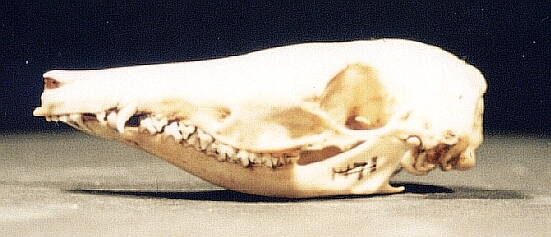
BANDICOOTS
SUPER COHORT MARSUPIALIA
COHORT AUSTRALIDELPHIA
ORDER PERAMELEMORPHIA
FAMILY PERAMELIDAE
|
Bandicoots are found in all major habitats - from tropical forests
to heathlands to desert steppes - in Australia, New Guinea and adjacent
islands, including Tasmania. They are small to medium-sized animals
weighing from 150 grams to 5 kg. Bandicoots are crepuscular or nocturnal and semifossorial, using burrows as refuges, and fill the same ecological niche as hedgehogs and shrews in other parts of the world.
Bandicoots move by hopping and resemble many small macropods. They can be distinguished from all other marsupials because they have both polyprotodont dentition and syndactylous toes on the hind feet which form a grooming comb. No other polyprotodont marsupials have syndactylous feet. Bandicoots obtain most of their food by digging with their strong feet and claws and their long snouts are used to probe into holes for food. They locate their food by scent. Their dentition is specialized for feeding on invertebrates, especially insects, but they also live on fruits, seeds and underground fungi. They have small even teeth of equal size with sharp cusps for crushing insects. |
Eastern-barred Bandicoot Perameles gunni from Tasmania |
 |
Bandicoots have polyprotodont dentition, i.e. they have more than two lower incisors. Their dental formula is I5/3; C1/1; P3/3; M4/4.
Bandicoots have the highest reproductive rate of all marsupials; the females are polyoestrous and breed throuhghout the year, providing the climate is suitable. Bandicoots provide little maternal care to their offspring and concentrate rather on producing many young, that become sexually mature at a very early age. Bandicoots are believed to be solitary animals coming together only to mate. Both sexes have scent glands behind their ears which are used to mark out territories.
Although their high reproductive rate enables bandicoots to replenish their populations rapidly, they have declined greatly in number, due most probably to predation by foxes, feral cats and dogs, and the destruction of their habitats by grazing stock, logging, drought and fire.
| Dasyurids | Marsupial moles | |
| Thylacine | Koala | Wombats |
| Kangaroos | Possums | Feathertail or pygmy glider |






